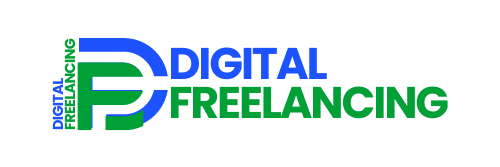Building Your Freelance Portfolio: Attracting Your First Client
Creating a strong freelance portfolio is essential for attracting your first clients and establishing credibility, even if you’re just starting. A well-organized, visually appealing portfolio demonstrates your skills, versatility, and commitment. With a few clever strategies, you can create a portfolio that stands out without needing years of experience. Here’s how.
Why You Need a Portfolio
A portfolio is more than just a collection of your best work; it’s a window into your skills, style, and reliability. For freelancers, having a portfolio is essential because it:
- Demonstrates Your Skills: Clients want to see what you can do before they hire you.
- Builds Trust: A portfolio proves you’re serious and capable of delivering.
- Sets You Apart: A well-designed portfolio can highlight your strengths and make you stand out from other beginners.
Even without years of professional experience, a thoughtfully curated portfolio can be a game-changer in landing your first client.
Easy Steps to Build Your Freelance Portfolio
1. Start with Personal Projects
If you’re new to freelancing, personal projects can be an excellent way to showcase your skills. Here’s how you can approach this:
- Choose Relevant Topics: Create projects that reflect the services you want to offer. For example, if you’re a web designer, design a sample homepage for a fictional company.
- Set Clear Goals: Approach personal projects like client work—set deadlines, deliverables, and objectives to keep them structured.
- Document Your Process: Share the journey, from ideation to final execution, as it highlights your problem-solving skills and commitment to quality.
Pro Tip: Share these projects on social media or platforms like Behance and Dribbble to build visibility and attract potential clients.
2. Showcase Internship Work
Internships can be a goldmine for portfolio content. Here’s how to leverage internship work, even if you didn’t receive formal projects:
- Highlight Relevant Skills: If you worked as a marketing intern, showcase skills like content creation, analytics, or campaign management.
- Explain Your Contributions: Outline your role in each project, explaining how you added value.
- Include Testimonials: If possible, get a recommendation from your supervisor; a positive review from a past internship adds credibility to your portfolio.
3. Leverage Volunteer and Community Projects
Volunteering can fill gaps in your portfolio while showcasing your commitment to learning. Here’s how to make the most of volunteer projects:
- Choose Recognizable Organizations: Volunteering for a well-known organization can add weight to your portfolio.
- Focus on Outcomes: Describe the project’s objectives and results, emphasizing your role in achieving those outcomes.
- Use High-Quality Visuals: Whenever possible, add visuals, charts, or screenshots to bring your volunteer projects to life visually.
4. Make Your Portfolio Client-Centric
A client-centric portfolio speaks directly to potential clients’ needs. Make it easy for them to see how your skills align with their objectives:
- Use Descriptive Titles: Instead of naming a project “Design Project 1,” try “E-commerce Website Redesign for Better UX.”
- Organize by Skill or Industry: Grouping your projects by skill (e.g., writing, design) or industry (e.g., health, tech) allows clients to find relevant examples quickly.
- Include Case Studies: If applicable, provide short case studies with project goals, challenges, and outcomes to show the impact of your work.
5. Invest in a Clean, Professional Presentation
A clean, visually appealing presentation can enhance your portfolio’s professionalism:
- Use High-Quality Images: Make sure visuals, screenshots, and documents are clear and professional.
- Add Brief Descriptions: Describe each project’s purpose, process, and results in a few sentences, focusing on how your contribution made a difference.
- Choose a Simple Platform: For beginners, free portfolio platforms like Behance, Wix, or even Google Drive can work wonders until you can afford a professional website.
6. Optimize Your Portfolio for SEO
SEO isn’t only for websites—it applies to portfolios, too. Here’s how to optimize your portfolio:
- Use Relevant Keywords: Use keywords like “freelance portfolio,” “portfolio for beginners,” and “how to attract clients as a freelancer” in titles and project descriptions.
- Add Alt Text to Images: Adding descriptive alt text can improve searchability.
- Write a Compelling Bio: Use your bio to introduce yourself, your background, and your skills, using keywords naturally to help clients find you online.
7. Keep It Updated
Your portfolio is a living document, so update it regularly:
- Add New Projects: As you gain clients, replace early projects with paid work.
- Refine Descriptions: Continuously refine your project descriptions to keep them clear and focused.
- Stay Relevant: Remove outdated work and add new projects that showcase any recent skill improvements or industry shifts.
Tip: Consider scheduling a quarterly review to keep your portfolio fresh, relevant, and aligned with your evolving skill set.
FAQ: Building a Portfolio as a Freelancer
Q: Do I need a website for my portfolio?
A: A personal website adds professionalism, but platforms like Behance, LinkedIn, or Dribbble can be good starting points.
Q: Can I use mock-ups or templates in my portfolio?
A: Yes, especially for personal projects. Just ensure they reflect your unique style and abilities.
Q: How many projects should I include?
A: Aim for 5–7 quality projects that highlight your range. It’s better to showcase fewer, stronger examples than to overload your portfolio with every piece of work.
Final Thoughts: Standing Out with Your Freelance Portfolio
Creating a freelance portfolio that attracts clients doesn’t require a long resume. By focusing on personal projects, internship work, and volunteer experience, you can showcase your skills and build credibility. As your portfolio grows, make it client-centric and SEO-optimized, ensuring it stays relevant and impactful.
Your freelance portfolio is a journey, and with each project, you’re one step closer to landing your dream clients. Start building today, keep refining, and get ready to attract your first clients!


